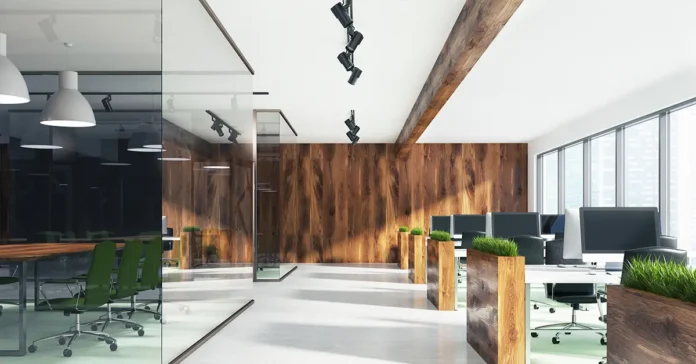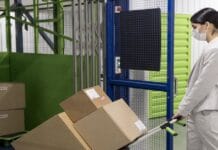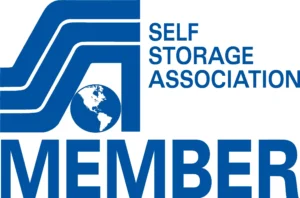Designing an adequate manager cabin involves thoughtful planning and strategic use of space. Start by focusing on decluttering. A clean, organized cabin enhances productivity and creates a professional environment. Consider incorporating functional utility storage during the renovation to keep essential documents and office supplies easily accessible. Opt for smart storage solutions, like built-in shelves or file cabinets, to maximize space.
Self-storage options can also be beneficial for managing overflow and keeping the cabin neat. If you’re undergoing relocation or office redesign, ensure the new cabin layout accommodates privacy and efficiency. Include comfortable furniture, proper lighting, and personal touches to create a conducive work atmosphere. Remember, the goal is to design a cabin that supports the manager’s role, enhances workflow, and reflects professionalism.
Manager Cabin – Traditional Office Layouts
Managers’ closed offices convey the message that they are in command and superior to everyone else. They are aware of what must be done and how to go about it. This form of management is quite dated. Previously, managers had to monitor every area of their staff members’ work. Managers today must inspire their teams and ensure their engagement.
There are still some advantages to managers working from private offices:
Pros
- Privacy – Cubicles offer seclusion and a sense of private space. Sometimes, while working on confidential projects, it is important to give managers a private space to work out of.
- Noise reduction – They create a physical barrier that blocks out noise and minimises interruptions, allowing them to focus on critical aspects of their role and new projects.
- Reduces the spread of germs – The spread of germs and contagious diseases across the office can often be prevented or significantly reduced with the use of cubicles. (However, it is always preferable for a sick employee to stay home from work.)
Cons
- Discourages communication and cooperation among team members – Physical impediments make it harder for cubicle workers to collaborate and communicate.
- Obstacles to vision – Less openness makes it harder for managers to connect with their teams. Body language plays a key role in building this connection as a team, which is obstructed when the manager is behind a closed door.
- More costly – When cubicles are involved, changing office layout and design is more challenging since they must be correctly removed and reassembled.
Clients and co-workers notice if you separate your office from your team. Managers and staff can collaborate well while maintaining their privacy in shared-use offices. Office design does not always have to be detrimental to employees’ productivity or mental well-being.
Manager Cabin – Open Space Offices
Open offices are becoming increasingly common in companies. In fact, open workplaces are less expensive than conventional office facilities, according to the Harvard Business Review. While dropping walls might seem like a terrific way to save money, there are some drawbacks to consider.
For instance, research shows that staff members in open offices may communicate with one another less often about work-related topics. Overall productivity may decline as a result. What about individuals who favour working alone? Are they being forgotten about?
No, not always. Companies are increasingly providing seating rotations for their employees. This arrangement helps in controlling the daily flow of people. They make sure everyone gets enough rest and does not become overextended. How therefore do you decide whether to supply seating for managers in your office?
There are strategies you may use to maximize manager productivity while reducing distractions in an open-plan office. Here are some thought-starters for making your workspace conducive to productivity for management:
1. Give Managers Access to Private Meeting Rooms
While keeping everyone in one large area can seem like a clever idea, it is ideal that offices are helpful to both individual and group performance for brainstorming and innovation. Allowing team leaders to book private offices or meeting rooms to work on certain projects can help make them more productive and less prone to experiencing distraction. This also makes sense in scenarios when managers need to focus on their work without interruptions.
2. Having Enough Quiet Areas
Creating spaces where people can go to contemplate alone may help promote peaceful focus. These might be meditation rooms, recreation centres, or even little study nooks. Give each person their own space if you can.
3. Make Sure Everyone Has Access to Power Outlets
In an open-plan office, this is often overlooked. However, you would not want a manager to run out of laptop charge in the middle of a presentation. It is essential for each team member to have access to a clear desk space with power points to conduct their day-to-day activities well. Similarly, ensure there is enough storage space to keep their daily ware, like stationary, journals, etc.
Offices are no longer just for working in. Teamwork involves more than just being able to see one another. Modern offices need to be designed to promote a healthy work environment. Additionally, you must promote a culture in which everyone feels free to express their thoughts. Many people believe that ideas are the source of collaboration. However, cooperation at times results from interaction!
Final Words for Manager Cabin
In conclusion, designing an adequate manager cabin is crucial for enhancing productivity and maintaining a professional environment. By focusing on decluttering and incorporating smart utility storage solutions, you can create a functional and organised space. During renovation or relocation, consider how the layout and design can best support the manager’s role while maximizing efficiency. Self-storage options are valuable for managing excess items and tidying the cabin.
Ultimately, a well-designed manager cabin provides a dedicated workspace and reflects the company’s commitment to a productive and supportive work environment. Investing in thoughtful design will ensure the cabin meets the needs of leaders and contributes to overall workplace success.
FAQs
A: Key elements include efficient utility storage, comfortable furniture, good lighting, and a clutter-free environment. These factors contribute to a productive and professional workspace.
A: Decluttering creates a cleaner and more organized space, which enhances focus and productivity. It also helps in maintaining a professional appearance.
A: Effective solutions include built-in shelves, filing cabinets, and desk organizers. These help keep documents and office supplies accessible and neatly stored.
A: Renovation allows for updating the cabin’s layout and features. It can improve functionality, enhance aesthetics, and ensure the space meets current needs.
A: Self-storage options are helpful in managing overflow and tidying the cabin. They help store items that are not needed daily but are still important.
A: Consider the new layout’s impact on workflow, the need for efficient storage, and ensuring the cabin remains functional and comfortable in the new space.
A: Proper lighting reduces eye strain and improves focus. It creates a pleasant working environment and helps maintain productivity throughout the day.
A: Ergonomic furniture that offers comfort and support is best. This includes adjustable chairs, spacious desks, and functional storage solutions.
A: Personal touches can include artwork, plants, or personal mementos. These add character and make the space feel welcoming while maintaining professionalism.
A: A well-designed manager cabin enhances focus, supports effective workflow, and provides a dedicated space for decision-making, all contributing to overall office productivity.








